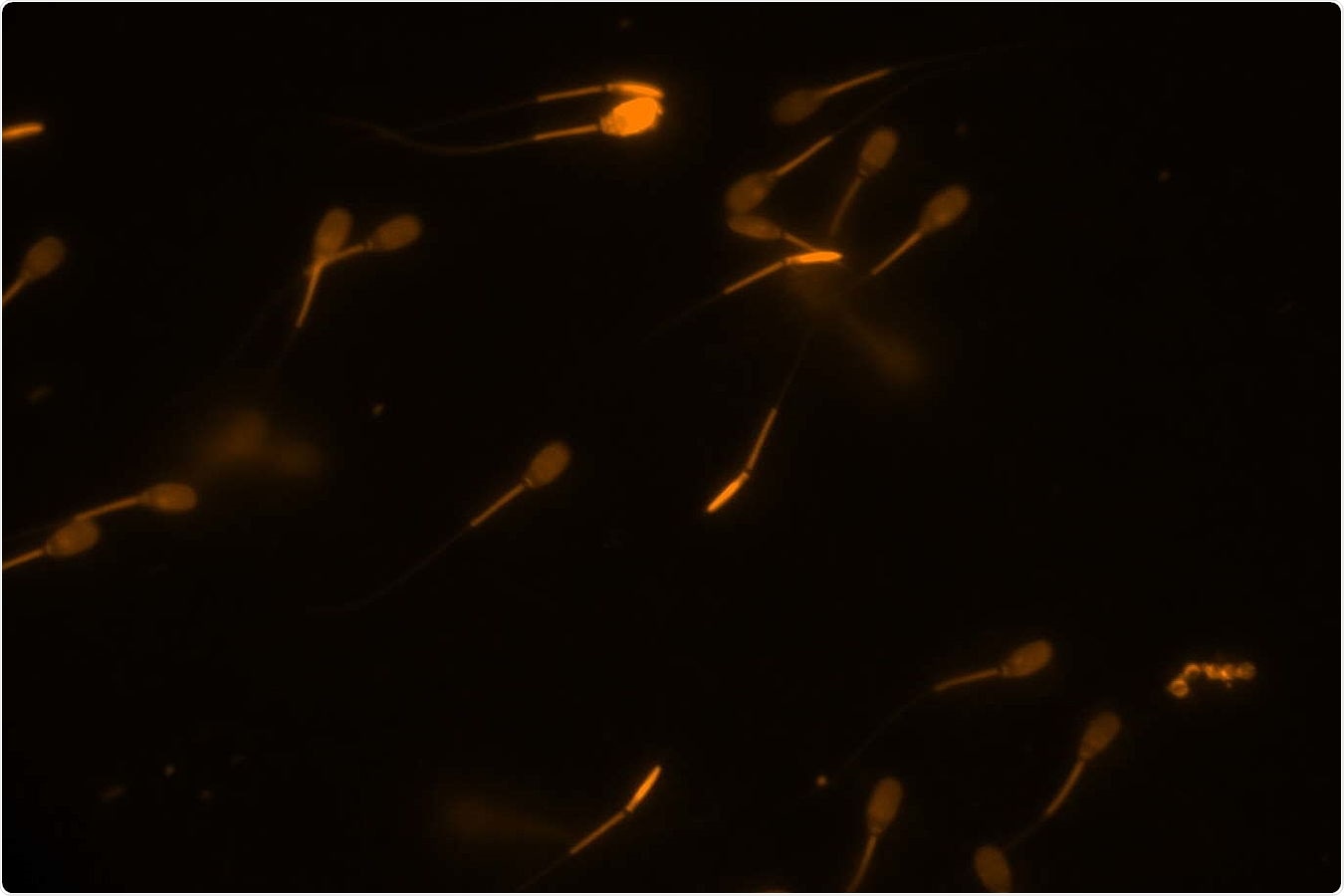A team of researchers from the Leibniz Institute for Zoo and Wildlife Research (Leibniz-IZW) and Leipzig University compared lipid profiles of sperm to learn more about their vulnerability to harmful oxidation and antioxidant capacity in different species’ semen.

Eber-Spermien. Image Credit: Karin Müller, Leibniz Institute for Zoo and Wildlife Research
The researchers discovered that the content of lipids in sperm and seminal fluid differed significantly, with more similar species such as domestic cow, pig, and horse showing similar lipid profiles.
This is in contrast to the very homogeneous lipid composition of erythrocytes and blood plasma from various animals. The findings contribute to a better knowledge of the impact of oxidative stress on reproductive processes, as well as potential assisted reproduction techniques. The findings were published in the peer-reviewed journal “PLOS ONE.”
Sperm are subjected to oxidative stress on their approach to the oocytes, which can cause the oxidation of membrane lipids and thus affect the function and structure of the cells.
A team of experts in reproductive biology and lipid biochemistry examined the responsivity of sperm and erythrocytes to oxidation, as well as the accumulation of harmful lipid oxidation products, utilizing sperm and blood from animal species with different reproductive systems and types of nutrition (domestic cattle, domestic pig, domestic horse, African lion, and humans). The researchers also looked at the seminal fluid’s ability to defend the body.
If lipid properties depend on cell function, we would expect differences in the lipid profile between sperm and erythrocytes. If it is nutrition which primarily determines the predominant lipids in the membranes, the lipid profile would be rather similar in both cell types of a species.”
Karin Müller, Scientist, Leibniz Institute for Zoo and Wildlife Research
“The results are important for estimating sperm properties in species that have not yet been studied and for adjusting prophylactic measures when sperm conservation and artificial insemination are used for species preservation, where the oxidative stress for gametes is increased by the freezing process,” Müller adds.
The researchers discovered that the lipid content of erythrocytes from various species is very consistent. Furthermore, the content of lipids in sperm and seminal fluid differs significantly, with more related species such as domestic cow, pig, and horse having lipid profiles that are similar.
These results suggest that the lipid composition is not determined by the type of diet, but by the relatedness of the species and by functional requirements of the cell membranes.”
Ulrike Jakop, Former Scientist, Leibniz Institute for Zoo and Wildlife Research
On the other hand, the sperm cell membrane must be extremely flexible for the gametes to travel around and later fuse with the egg. This explains why polyunsaturated fatty acids, which are especially vulnerable to oxidative stress, are abundant in sperm lipids.
The stability of the sperm, on the other hand, must be preserved until it fuses with the oocyte. African lion sperm, for example, which are placed far downstream in the female genital canal by the male, must travel a lengthy distance to reach the oocyte, passing through numerous portions of the genital system.
Their membranes are predominantly saturated fatty acids and less oxidation-sensitive ester lipids and sphingomyelins. Extremely effective protective mechanisms have evidently developed in the semen of bull spermatozoa, which have membranes containing particularly oxidation-sensitive unsaturated ether lipids (plasmalogens).
Lysolipids are generated when lipids in the sperm membrane are oxidized. Their accumulation would compromise the membrane’s integrity.
In the sperm of all species studied, the accumulation of harmful lysolipids is largely avoided by the presence of less sensitive lipids from the outset, the timely elimination of radicals and the rapid degradation of oxidized lipids. Interestingly, samples with high lysolipid concentrations in sperm were particularly found in humans, although the lipid profile shows less oxidation-sensitive lipids and the protective mechanisms are very effectively developed.”
Kathrin M. Engel, Scientist, Leipzig University
“Presumably, lifestyle factors cause high oxidative stress, which overtaxes the natural portfolio of protective mechanisms,” Engel added.
Additional research will aid in understanding individual imbalances between oxidative stress and resilience factors in humans and animals, as well as adjusting assisted reproduction techniques.
Source:
Journal reference:
Jakop, U., et al. (2022) Seminal lipid profiling and antioxidant capacity: A species comparison. PLOS ONE. doi.org/10.1371/journal.pone.0264675.